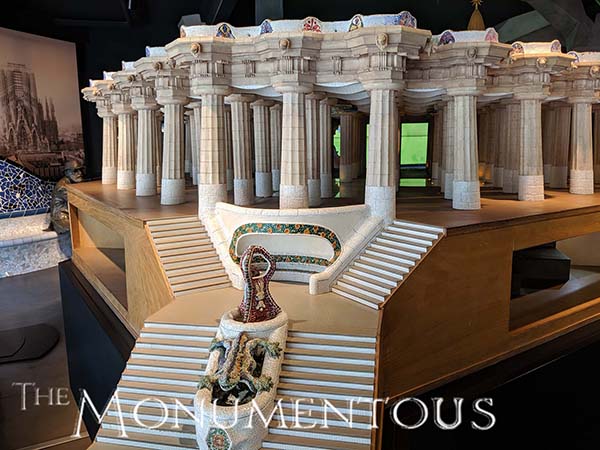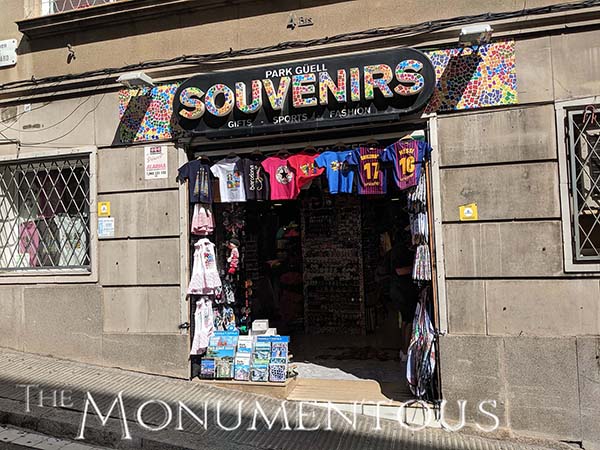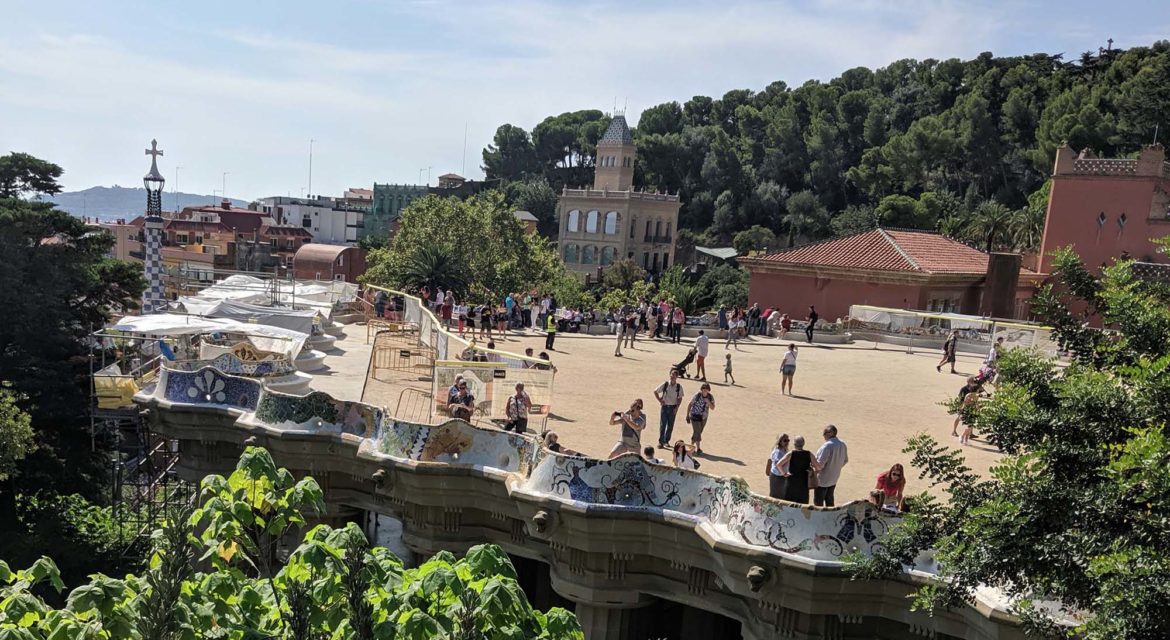 As one of Barcelona’s most famous landmarks, Park Güell has been able to utilize and build upon the notoriety that Antoni Gaudí has enabled for the entire city. That influence has seen what was originally intended to be a residential estate turned into an incredible public park system composed of municipal gardens and imaginative elements that pulls in audiences from across Barcelona and all of Spain.
As one of Barcelona’s most famous landmarks, Park Güell has been able to utilize and build upon the notoriety that Antoni Gaudí has enabled for the entire city. That influence has seen what was originally intended to be a residential estate turned into an incredible public park system composed of municipal gardens and imaginative elements that pulls in audiences from across Barcelona and all of Spain.

The History of Park Güell
 The idea for Park Güell came about at the turn of the 20th century when plans for an urban development project first arose for the area on Carmel Hill, in Barcelona, Catalonia, Spain. The project was awarded to Antoni Gaudi by Eusebi Güell, a prominent Catalan industrialist whose plan was to build 61 houses for well-to-do families along with a network of roads, viaducts and stairs to make it easier to get around the hilly terrain. Güell wanted to recreate the British residential parks and locate homes close to nature. It’s why he called the place Park Güell.
The idea for Park Güell came about at the turn of the 20th century when plans for an urban development project first arose for the area on Carmel Hill, in Barcelona, Catalonia, Spain. The project was awarded to Antoni Gaudi by Eusebi Güell, a prominent Catalan industrialist whose plan was to build 61 houses for well-to-do families along with a network of roads, viaducts and stairs to make it easier to get around the hilly terrain. Güell wanted to recreate the British residential parks and locate homes close to nature. It’s why he called the place Park Güell.
Work began in 1900 as Gaudí planned out the intertwining roads and footpaths, water catchment, market place and square, gardens and lodges. However, only two houses were sold and the work was paused in 1914 with the construction of the pillarded hall (hypostyle hall) and mosaic bench around the square. Work came to a final stop in 1922 following the failure of the urban development project. Güell then sold the park to the City Council, which opened it as a public park in 1923.
In 1969, Park Güell was declared to be a historical-artistic monument by the Spanish government. In 1984, it was declared to be a UNESCO World Heritage Site along with other Gaudi works. That recognition underscores why Park Güell has become such an attraction for Barcelona and all of Spain.

Experiencing the Imagination of Gaudi
 In becoming an icon of Barcelona itself, Antoni Gaudí’s style and sensibilities are evident across the city, but they come to life in Park Güell. His vision as it relates to sinuous and organic shapes, integration with nature and distinctive mosaics can be seen throughout the park. The Park is organized around a central core of monuments that include the staircase, the pillared hall and the square. The continuous bench around the square, the back of which forms a balustrade, featured a surface that is entirely encrusted with ceramic shards of all colors, some randomly arranged, some in patterns.
In becoming an icon of Barcelona itself, Antoni Gaudí’s style and sensibilities are evident across the city, but they come to life in Park Güell. His vision as it relates to sinuous and organic shapes, integration with nature and distinctive mosaics can be seen throughout the park. The Park is organized around a central core of monuments that include the staircase, the pillared hall and the square. The continuous bench around the square, the back of which forms a balustrade, featured a surface that is entirely encrusted with ceramic shards of all colors, some randomly arranged, some in patterns.
The buildings flanking the entrance are also unique and fantastically shaped with distinctive pinnacles, but they fit in well with the landscape. Elsewhere, Gaudi shaped nature into colonnades, archways and covered galleries with well-camouflaged artificial structures. Arguably, the most distinctive feature of the space outside of the bench that is both a balcony and a piece of art is the mosaic dragon salamander, which is also an overflow for the underground water cistern.
Gaudí’s sense and style are contrasted with the incredible views of Barcelona that the space provides visitors. The park’s high-point offers a complete view of Barcelona and the bay, where visitors can see the spires of Gaudí’s the Basílica de la Sagrada Família and other notable Barcelona monuments. Like other parks that feature natural and manmade monuments, the park supports a wide variety of wildlife, notably several of the non-native species of parrot found in the Barcelona area.
These experiences have driven a profound impact on the economy of Park Güell and Barcelona as a whole, all of which have further defined the culture of the region.

The Impact of Park Güell Across Barcelona
 Park Güell has 2 different areas: the restricted area, which requires the purchase of a ticket, and the free access area that is open to all visitors at no charge. Once inside, visitors can take as long as they’d like to enjoy the brilliant architect’s work. However, the tickets for visiting the restricted area do not include access to the Gaudí House Museum.
Park Güell has 2 different areas: the restricted area, which requires the purchase of a ticket, and the free access area that is open to all visitors at no charge. Once inside, visitors can take as long as they’d like to enjoy the brilliant architect’s work. However, the tickets for visiting the restricted area do not include access to the Gaudí House Museum.
Numerous other businesses and vendors have been able to survive and thrive thanks to Park Güell. The park is an important part of various maps and tours of Barcelona, while guided tours are offered by numerous companies in multiple languages to inform visitors about the site’s history, symbolism and natural and heritage values. Additionally, countless products and souvenirs associated with Gaudi and Park Güell are available for purchase through official and unofficial means.
Items, sites and tours associated with Gaudí are available all across Barcelona, but few are able to showcase his style and sensibilities like Park Güell. In doing so, the park has become an essential place for both residents and visitors to experience, which has cemented Park Güell as one of the most important sights in Barcelona and all of Spain.

Celebrating Legacy of Gaudí and Beyond
 Located within walking distance of Sagrada Família, Park Güell is inherently tied to the legacy of Gaudí that permeates all of Barcelona. However, by also supporting a wide variety of wildlife and becoming such an important destination for the surrounding community, Park Güell has been able to showcase what it can mean to celebrate a legacy while also forming a distinct identity that both builds upon and goes beyond it.
Located within walking distance of Sagrada Família, Park Güell is inherently tied to the legacy of Gaudí that permeates all of Barcelona. However, by also supporting a wide variety of wildlife and becoming such an important destination for the surrounding community, Park Güell has been able to showcase what it can mean to celebrate a legacy while also forming a distinct identity that both builds upon and goes beyond it.

